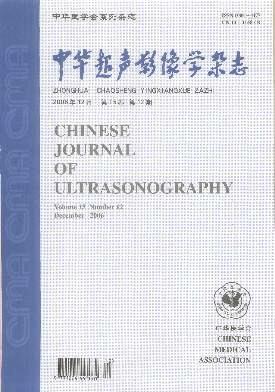Study on the relationship between the extent of runoff lesions under the knee and the patency of femoropopliteal artery stent in patients with diabetes
Q4 Medicine
引用次数: 1
Abstract
Objective To evaluate the impact of runoff score on the patency of femoropopliteal artery (FPA) stent in patients with type 2 diabetes mellitus with ultrasonography. Methods A retrospective review of a database of 127 patients with type 2 diabetes mellitus (127 limbs) undergoing femoropopliteal stents in Xuanwu Hospital from January 2016 to July 2018 was made. Demographic characteristics and possible related risk factors were recorded. The extent of FPA disease and the runoff lesions below the knee (anterior tibial artery, posterior tibial artery, and peroneal artery) were preoperative evaluated and regular followed-up by color Doppler ultrasonography (CDU). Femoropopliteal artery lesions were graded according to the Trans-Atlantic Inter-Society Consensus (TASCII), and the runoff lesions below the knee were scored according to the Society for Vascular Surgery (SVS). The patency and the predictors for in-stent restenosis were assessed using a Kaplan-Meier and Cox proportional hazards model. Results Follow up period ranged from 1 month to 24 months.The total patency rates at the 3, 6, 12, 24 months were 91.5%, 70.9%, 45.7% and 31.7%, respectively. Post-procedural runoff score according to SVS criteria: 1-3 scores in 45 limbs, 3.5-5 scores in 37 limbs, 5.5-7 scores in 34 limbs, 7.5-10 scores in 11 limbs. The median runoff score was 4.Patients were stratified according to runoff scores (score ≤4 and >4 groups), and the difference of the patency rates between the two groups was statistically significant by Kaplan-Meier analysis and Log-rank test (χ2=10.825, P=0.001). The runoff score affected patency significantly on COX analysis (RR=1.155, P=0.006, 95%CI: 1.042-1.281). Conclusions Compromised runoff negatively affects the patency of FPA stent. High post-procedural runoff score is a main risk factor related to loss of patency. CDU is a reliable method for monitoring patients with femoropopliteal stenting. Key words: Ultrasonography; Diabetes; Femoropopliteal artery; Runoff score; Stent糖尿病患者膝下径流病变程度与股腘动脉支架通畅关系的研究
目的应用超声评价径流量评分对2型糖尿病患者股腘动脉(FPA)支架通畅性的影响。方法回顾性分析2016年1月至2018年7月宣武医院127例2型糖尿病患者(127肢)股骨腘窝支架置入术的数据库。记录人口统计学特征和可能的相关危险因素。术前评估FPA疾病的程度和膝下径流病变(胫骨前动脉、胫骨后动脉和腓动脉),并定期用彩色多普勒超声(CDU)进行随访。根据跨大西洋学会共识(TASCII)对股腘动脉病变进行分级,根据血管外科学会(SVS)对膝盖以下的径流病变进行评分。使用Kaplan-Meier和Cox比例风险模型评估支架内再狭窄的通畅性和预测因素。结果随访1个月~24个月。3、6、12、24个月的总通畅率分别为91.5%、70.9%、45.7%和31.7%。根据SVS标准的术后径流量评分:45肢1-3分,37肢3.5-5分,34肢5.5-7分,11肢7.5-10分。中位径流量得分为4。根据径流量得分对患者进行分层(得分≤4和>4组),经Kaplan-Meier分析和Log-rank检验,两组通畅率差异有统计学意义(χ2=10.825,P=0.001)。COX分析,径流量评分对FPA支架的通畅性有显著影响(RR=1.155,P=0.006,95%CI:1.042-1.281)。术后径流量评分高是导致通畅性丧失的主要危险因素。CDU是监测股骨腘窝支架植入患者的可靠方法。关键词:超声检查;糖尿病;股腘动脉;径流得分;支架
本文章由计算机程序翻译,如有差异,请以英文原文为准。
求助全文
约1分钟内获得全文
求助全文
来源期刊

中华超声影像学杂志
Medicine-Radiology, Nuclear Medicine and Imaging
CiteScore
0.80
自引率
0.00%
发文量
9126
期刊介绍:
 求助内容:
求助内容: 应助结果提醒方式:
应助结果提醒方式:


